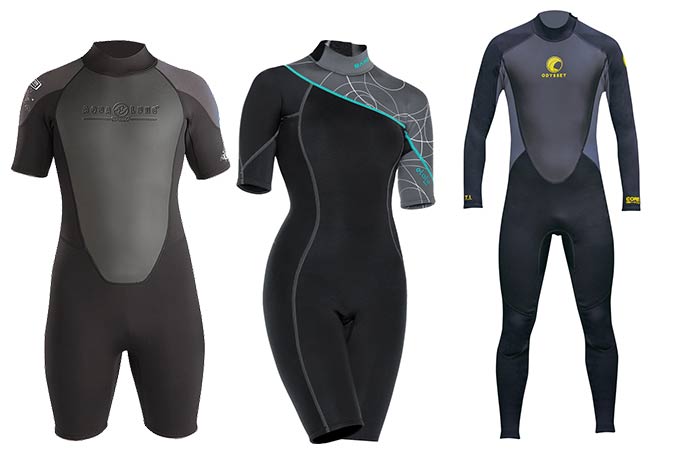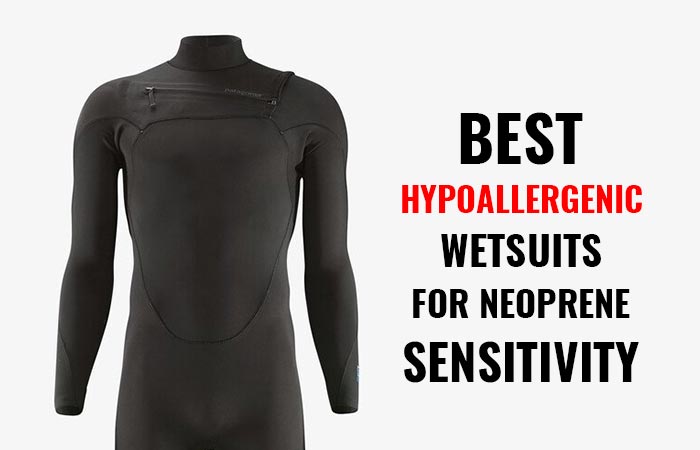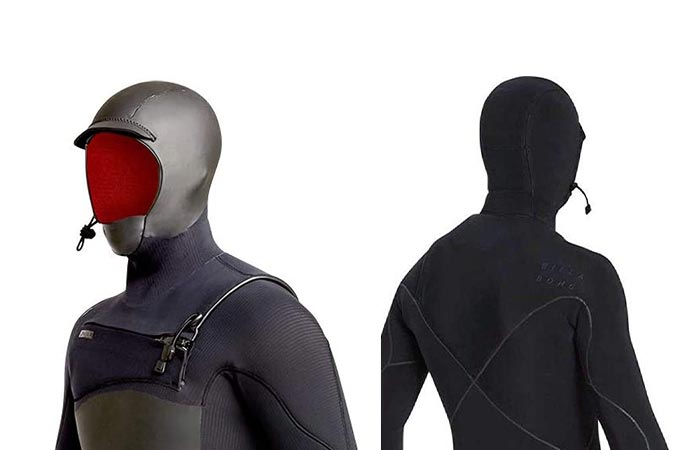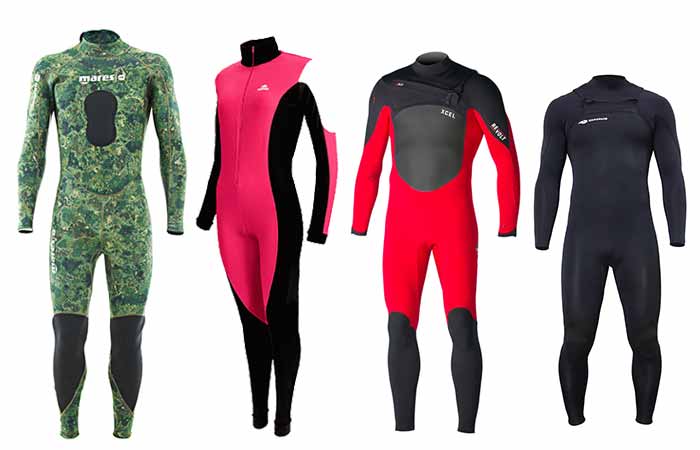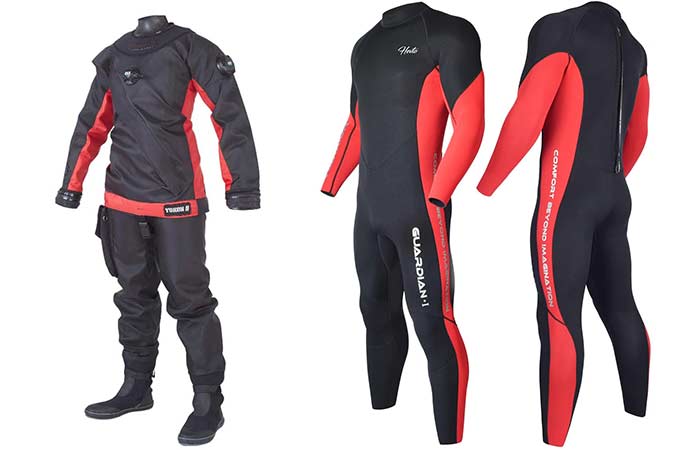How Tight/Fitting should a Wetsuit be?
With other cloths, you have the option of having them either tight or loose, you don’t have that luxury with wetsuits since the only way to wear them properly is having them tight. The reason for this is that wetsuits only work well when they’re close to the skin on all parts of the body they cover.
Wetsuits work by trapping a layer of water between the suit and the skin. This water layer gets warmed up by the body. Since it can’t move out of the suit, it doesn’t lose its heat. This way, the body is kept warm even when you’re still surrounded by cold water.
If your suit is loose, water will circulate around your skin taking away heat from your body in the process. You’ll thus feel cold even with a suit on. Even with the tightness, however, you need to have a comfortable fit since a wetsuit that’s too tight will restrict your movements and mess with the whole exercise.
How tight it should be
The wetsuit should be tight enough that it seems like a second skin. This means that it shouldn’t have any folds, wrinkles or creases on any part of the body. It should also fit the body as much as needed. For a full suit, it should reach the ankles, the wrinkles and the neck properly.
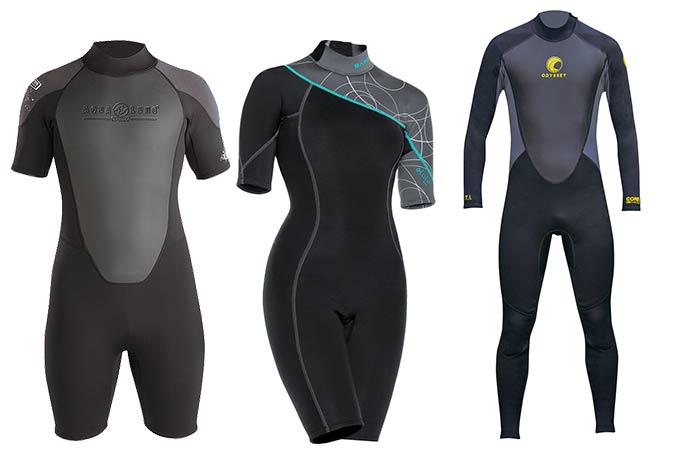
On the body, the suit should be tight and flexible enough to allow for free motions with the hands and the legs. It should be as close to the skin as possible to prevent the circulation of water around the skin.
At the edges of the suit such as the ankles, wrists and neck, the suit should be tight enough to prevent water from freely entering and leaving the skin.
Even when the rest of the suit is tight and the wrists, ankles and neck are loose, you’ll still be cold since water will enter and leave the suit through these regions.
While looseness is easy to see, tightness is a bit tricky given that it can be easily confused with a proper fit. Some of the aspects to show your wetsuit is too tight include the following:
- If you feel a squeeze around the neck then it’s too tight.
- If your wetsuit restricts the flow of blood and breathing then it’s definitely too small.
- If the wetsuit doesn’t conform to the shape of your body for being too tight, it won’t work well.
- If some parts of the wetsuit are stretched so thin that they don’t conform with the other parts, it’s a sign that the suit is too tight.
- If you notice any chaffing when you take off the wetsuit it means that it’s too tight.
Such a suit will not provide the advantages you’d normally expect from a wetsuit when in the water.
Factors that will influence the tightness
The determining factors for the tightness of a wetsuit are as follows:
1. The size of the wetsuit
The size of the wetsuit is the most important thing as it’ll determine how fitting it is to you. Put simply, a large wetsuit relative to your body will be baggy while a small one will be too tight. Finding a wetsuit that perfectly fits you isn’t easy and should be carried out with lots of patience. The aim should be getting a suit that is just tight enough that it provides the needed protection while allowing for easy mobility when in it.
2. The length of the suit
Given the many different body configurations, finding a suit is even harder when the length of the arms and legs is considered. For the best fit, you need a suit that reaches the wrist and ankles to provide a tight and comfortable seal. Even when your suit has a good fit but is short at the arms and legs, it’s still not good enough.
Keeping these aspects in mind helps you get the right wetsuit for your diving and other water sports.
Tips to keep your wetsuit fitting
Some of the tips to keep your wetsuit fitting are as follows:
- Choose the right size that’s not too baggy or too tight.
- Make sure the wetsuit doesn’t have any folds, creases or wrinkles when worn.
- Give the wetsuit time to adapt to the shape of your body. This will take several sessions of wearing the suit over and over again.
- Avoid pulling it out or apart to make it stretch as you want it to. This will only risk tearing it and won’t work as needed.
- Always try out the wetsuit before purchasing it. Just because a similar size fitted last time doesn’t guarantee that it’ll fit this time round. Different materials have different fitting properties as well.
- Wear the wetsuit in the right way to avoid overstretching it. The right procedure should be followed to avoid the openings being stretched out too much.
With these tips, you can be sure to keep your wetsuit in line with your fitting needs.
How to break in/loosen a wet suit
The first time you put on your wetsuit, it’ll likely not readily fit your body perfectly. This is because wetsuits are made to have a standard fit. As you wear it more and more, it’s expected that it’ll fit your body perfectly.
Breaking in a wetsuit refers to loosening it up enough that it conforms to the shape and size of your body. A broken in wetsuit perfectly fits the person with the result that it provides the needed protection while allowing for easy movement in the water.
Wetsuits are made of stretchable neoprene material. If you put the suit on and it fits well (not too tight or baggy), then you can count on it to adapt to your body with tie. after putting on the suit, do a stretch each time to stretch it a bit. You can do squats, a few jumps, lunges and a few stretches typically meant for warming up.
Don’t attempt to manually stretch it since it won’t work. instead, you risk tearing off some parts with the likelihood of spoiling your wetsuit as a whole. It’s not easy to repair a wetsuit and thus attempting to stretch it is a risk not worth taking.
The more you use your wetsuit, the better fitting it’ll become. This is because it’ll be stretching a little each time you use. The good news is that it’ll be stretching into the shape of your body and will stop when it has attained the right fit for you.
More on Wetsuits
- How do Wetsuits Work?
- What are Wetsuits Made of? Types & Top Brands
- Wetsuits Colors: Why Black? What is the Best Color?
- Wetsuit vs Dry Suit
- How to Properly put on a Wetsuit, Remove+ Dos & Don’ts
- What to Wear Under Wetsuit: Female, Men & Triathlons Undergarments
- Wetsuit Thickness Guide + Temperature Chart
- How to Wash a Wetsuit + Best Cleaners, Shampoo & Soap
- How to Dry a Wetsuit + Best Drying Hangers & Racks
- Wetsuit Storage and Care Tips
Best Wetsuits

